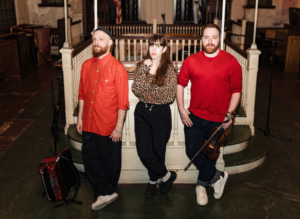Fighting Academic Censorship with Public Art
Artist Ruth Henry challenges censorship in public schools with her piece "Free to Learn"
Published Jul 25, 2023

A human-sized birdcage stands open; a school desk sprouts from a garden in its center. “What do you want the freedom to learn?” asks the desk. Sharpies hang below. Chalkboards and chalk add the question: “What do you want the freedom to teach?” Birds built of pencils perch atop the desk and the cage, stories refusing to be silenced or confined.






Henry’s sculpture speaks volumes about the current state of public education, specifically addressing the alarming rise of censorship in schools. The open birdcage symbolizes liberation, while the juxtaposition of the school desk within a garden prompts contemplation about the freedom to learn. The questions posed on chalkboards invite participants to actively contribute their thoughts on what they want to learn and teach, fostering a collective envisioning of possibilities.
The image of birds made of pencils reinforces the idea that stories and knowledge cannot be confined or stifled. As censorship looms over public education, “Free to Learn” encourages viewers to reflect on the importance of preserving intellectual freedom and open dialogue within educational institutions.
In the face of a concerning wave of censorship in public education, Henry’s sculpture serves as a rallying cry for the protection and expansion of teachers’ and students’ freedom to explore and discuss issues of injustice. The call to action embedded in the installation urges support for organizations like the Louis D. Brown Peace Institute and the signing of the ACLU’s National Pledge, emphasizing the real-world implications of this artwork.
Henry’s belief in art’s power to unite people across painful divides is born of lived experiences as a socially engaged artist, both locally and globally.
Be the change:
- Support Local Action through the Louis D. Brown Peace Institute.
- Sign the ACLU’s National Pledge.
- Share Your Story.





Hear From the Artist
Discover the inspiration behind the sculpture; explore the Jewish tradition of “passing the torch” with Be the Change Global Ambassador Idit Klein and Ruth Messinger; learn about Generation Peace, calls for action, and the artist’s vision for the future; and hear about how Henry plans to engage community with art.
JArts’ mission is to curate, celebrate, and build community around the diverse world of Jewish arts, culture, and creative expression. Our vision is of a more connected, engaged, and tolerant world inspired by Jewish arts and culture.
Reflections
1
How does the imagery in the artwork symbolize the concept of academic censorship and its impact on the freedom to learn? In what ways does the inclusion of the question on the desk, "What do you want the freedom to learn?" invite viewers to reflect on the importance of educational autonomy and personal growth?
2
The sculpture incorporates elements such as Sharpies, chalkboards, and chalk to encourage viewer participation and engagement. How does this interactive aspect contribute to the artwork's message about resisting censorship and embracing the freedom to teach? How can the act of adding personal stories and hopes to the sculpture foster a sense of collective envisioning and empowerment?
3
How does the artwork promote the idea of liberatory education and the exploration of diverse perspectives? How can the provided QR codes to liberatory education resources further enrich the conversation and lead to additional stories around academic censorship and the pursuit of a more inclusive education system?
BONUS:
Click here to access the Free to Learn Story Guide, an opportunity to explore the stories tucked within the sculpture and reflect on the questions that link them.
Want more?
Get curated JewishArts.org content in your inbox





